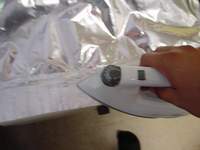Preparing Through Things You Should Be Doing Anyway
Glenn Reynolds linked this post about whether or not the government will eventually tax Roth IRA’s, even though they were set up to be tax-emempt. McArdle’s conclusion might be par for the course for many preppers, but it might be helpful for others:
So I don’t advise not saving. But I’ve started thinking about saving in ways that Uncle Sam won’t be tempted to touch–like paying off your house early, maybe buying a vacation home (for cash) if you know where you’re likely to want to spend a lot of time, and doing the kind of renovations that save you money in the long run–better insulation, higher-end energy-efficient appliances, etc. Paying now to lower your monthly costs later may have a better after-tax return than that “tax free” account.
My wife and I have been debt-free for some time now, except for our mortgage. One of our goals is to pay that off in the next 5-7 years. Having a decent lifestyle that can be supported by working at the local fast-food restaurant must bring financial peace of mind, and it is one we hope to achieve.
Being prepared goes hand in hand with having our finances under control, and not having them control us. We do have a Roth and a 401(k), but I have about as much faith in them performing well enough to let us retire comfortably as I do in Social Security being available when I am 65. While I do believe in investing for retirement once you have the other financial aspects of your life under control, bringing our monthly costs down to almost nothing will be a better and more immediate investment that will allow more options in our lives.
As I also believe inflation will take a good portion of our earnings in the next several years, I am purchasing more (useful) goods that will retain value or hopefully not lose much. My food storage from 2007 is a huge boon, as to purchase the same items today would cost 30% more, and will likely be pushing 40% by year’s end. That’s a whole lot better than my 401(k) performed since 2007.
I also assume prices aren’t going down anytime soon, so we are also purchasing some things our house needs and that don’t depreciate rapidly, such as a new refrigerator, washer and dryer, some tools, and maybe a firearm or 3. We’ll still get a deal where we can, such as at the local scratch and dent store, but I’d much rather have at least some of our cash in hard goods than in my savings account earning -8%.
One of our preparedness group members also completed a huge project along this line. His electric bill has been outrageous since he bought his home several years ago (over $350/month), so he completely replaced every component of his heating system. He took out the heat pump, installed a propane system with a tankless water heater, and added some insulation as well as some monitoring thermostats. I expect he’ll cut his electric bill in half and the savings will pay for his investment within a year or two.
It’s definitely a more interesting mix of saving and spending than I’ve advocated in the past, or that might be acceptable to Dave Ramsey, but one that makes sense for my family.




